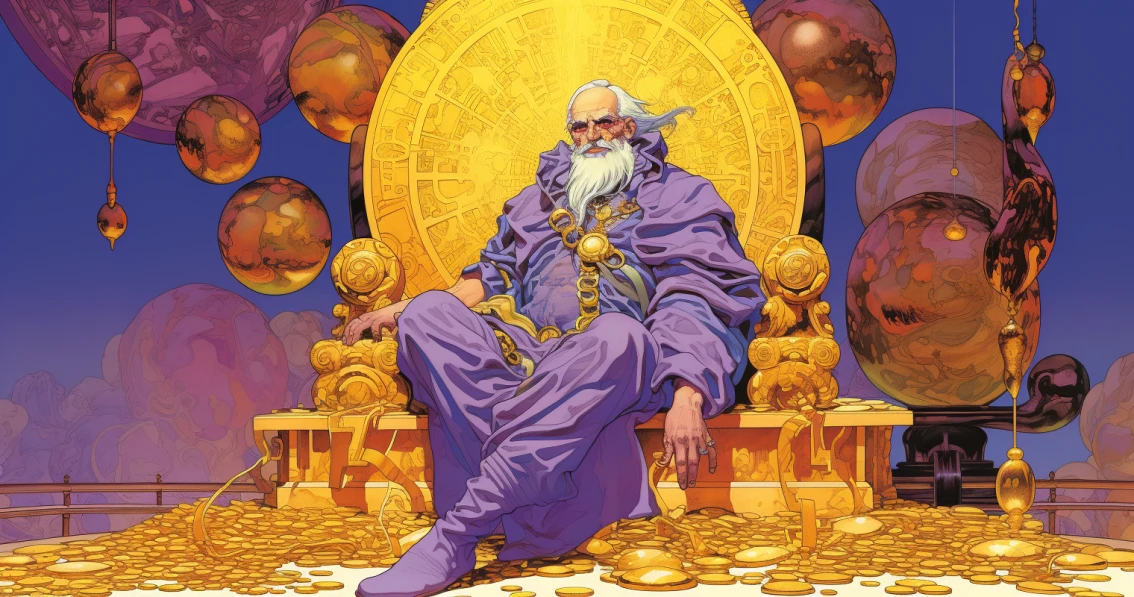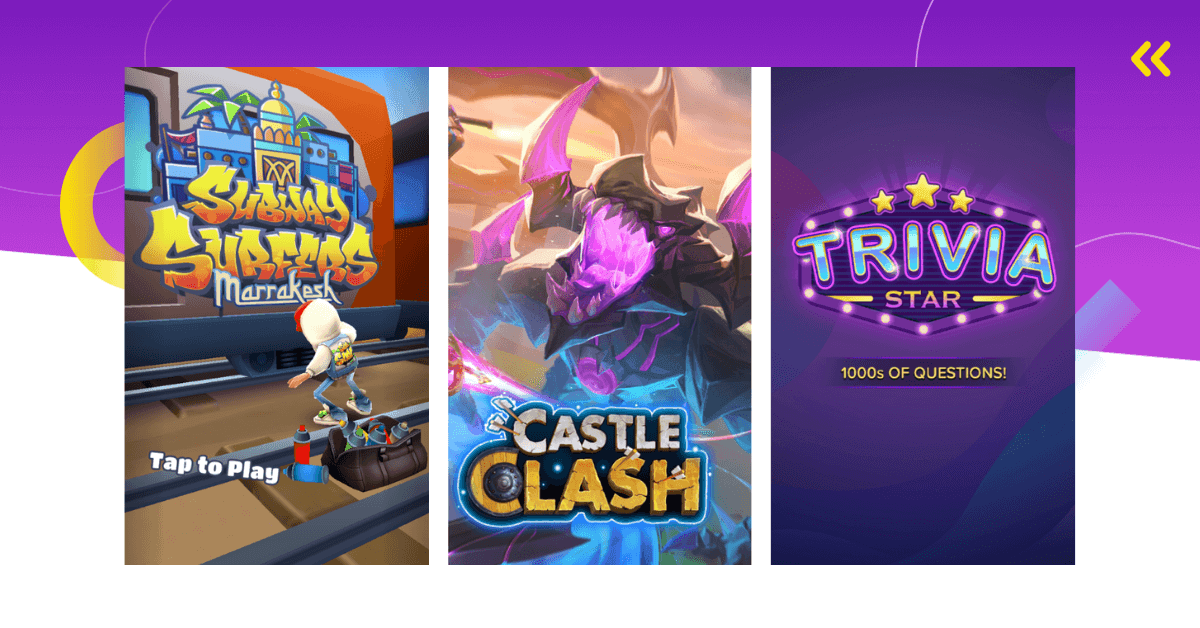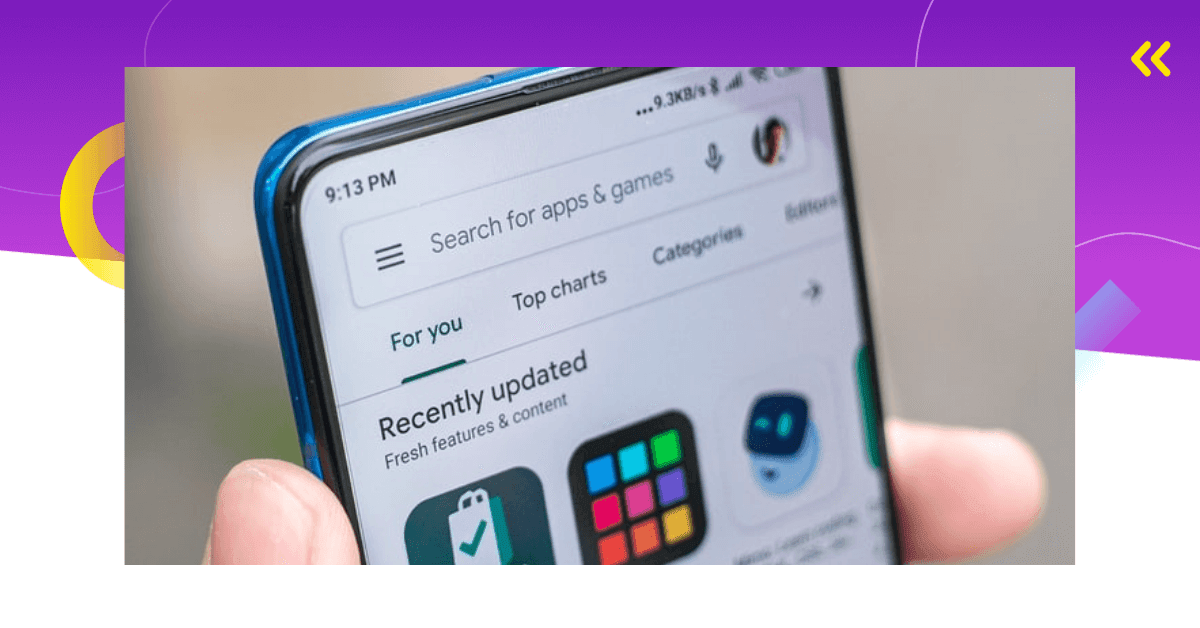The puzzle genre is a pond full of fish. Big fish rule the pond, and it’s not easy to survive.
Therefore, when a game succeeds in this genre, you know it’s something.
June’s Journey is an example of such a game. In this article, I analyzed June’s Journey monetization strategy.
I covered the game’s most notable monetization practices and answered every “what” and “why” you may think of.
June’s Journey: Hidden Objects Market Overview
This game was released in October 2017 by Wooga. It falls into puzzle and adventure genres, and the hidden object subgenre.
Not quite familiar with the subgenre? Let me fill you in.
In hidden object games, players get a list of items they need to find in a cluttered scene.
How do they work exactly?
Players mainly stare at their screens until they find something from the list. In these games, this is the core gameplay. To make things more interesting, hidden object games usually add different meta layers.
June’s Journey: Hidden object is the #1 game in this subgenre.

Here’s a bit of history.
In 2019, the subgenre grew at a fast pace. This was mainly thanks to June’s Journey’s rapid growth.
This might have had something to do with what happened in December 2018. This is when a mobile game giant, Playtika, acquired the game’s publisher – Wooga.
In 2020, this game made up 50% of the subgenre’s revenues (Deconstructor of Fun). Yeah, this is how dominant the game was. It was followed by Seeker’s Note at a “slim” 20%.
On the other hand, older hidden object titles (e.g., Criminal Case, Murder in the Alps) have been declining or stagnating.
In 2022, June’s Jurney is still going strong, as I’ll demonstrate in the following section.

How Successful Was June’s Journey in 2022?
Let’s take a look at AppMagic’s data on June’s Journey.
June’s Journey’s revenues have been growing ever since launch day. That means this game is getting progressively more profitable, which is a huge achievement. Most games fail to keep users engaged enough to keep playing and spending.
As you can see, the game’s revenue chart is constantly growing. This is mostly thanks to US players that make up the majority of the game’s total revenue. However, Germany, Canada, and the United Kingdom are other profitable markets for this game.
During its lifetime, the game got to $480 million in revenue.
Even though it was released back in 2017, June’s Journey got the most users in June 2021, when the downloads reached almost 5 million. However, they were never that high again. During 2022, the number of downloads ranged from 600,000 to 800,000 each month. At the beginning of 2023, they went up to almost 1 million.
Since its release, June’s Journey was downloaded more than 63 million times.
What does this game do to be so successful? First, it attracts the right players with the right advertising strategy.
From then on, it has a tough job of retaining and monetizing players. We’re here to analyze all that, so let’s start our June’s Journey monetization deconstruction.

First Time User Experience
When players launch the game, they are welcomed by immersing cut scenes.
They take place in 1920 and explain the game’s backstory – a family murder that needs to be solved. They get to know the game’s protagonist, June, and learn her motivation to crack the case.
The story’s goal is to hook and intrigue players. Also, since it’s about family, and people are generally sensitive to family – they can get emotionally involved.

Game Tutorial
After the intro, players are thrown right into a scene to find clues.
They get a contextual lesson (pointing) but they need to finish the scene themselves. This is the best and fastest way to teach players how to play the game – by doing, not reading about it.
After that, the tutorial is spread across the game. Therefore, as players unlock new mechanics, they gradually learn new things. This is done with short written explanations. They are forced, so players have no other choice but to follow them.
As a part of the tutorial, players are introduced to the in-game market. This is a smooth intro to the game’s economy.
All in all, the tutorial is simple, clear, and effective. Just like it should be for the game’s casual audience.

UX/UI
There are two settings where players spend most of their time: building their island and solving scenes.
The island is set on a map where players simply build and move objects. The scene setting is even simpler – players need to spot objects from the list they get and just tap them.
As you can see, the game’s user interface is similar to those of top puzzle games like Homescapes and Project Makeover. The main feature on the screen is the big “play” button on the bottom right.

How Does June’s Journey Work?
This game is more than just seeking and finding hidden objects. June’s Journey gameplay loop consists of four main parts:
- Playing hidden object scenes
- Completing scenes and collecting rewards
- Building and upgrading the island
- Unlocking new content
Let me explain how they all work together.
To start playing a hidden object scene, players need energy. Once they finish playing a scene, they get completion rewards – coins, diamonds, stars, loot boxes, etc.

After they complete a scene, players can see a PvP leaderboard. Here, they can see if they were faster and better than others. However, this does not affect progress in any way.
Coins and diamonds help players build their islands. Once they make some progress on the island, they earn daffodils. They can then use daffodils and stars to unlock new scenes and chapters.
Every single aspect of the game is dependent on one another. Players can’t choose to engage with just one part of the game they like most. They have to engage with both the hidden object core and the world-building meta.
As you can see, this game is really feature-rich. Another great thing is – players can’t actually get defeated in it.
Think about it.
No loss – no negative feelings.
This game is all about progressing and unlocking new content. The developers’ task is to keep things interesting and to keep fresh content coming.
All of this has an impact on June’s Journey monetization strategy.

Meta Layers in June’s Journey
I’ve already mentioned this game has a world-building meta layer.
However, it’s not the only one.
There is one more meta layer that enriches this game – the narrative.
The world building-meta is an integral part of gameplay. This meta layer contains build timers that restrict the players’ session. For this reason, it is a big part of the game’s monetization strategy.
The narrative layer helps players dive deep into the game and connect all the dots. For some players, keeping up with the story is the main reason to keep playing the game.
June’s Journey Monetization Strategy Breakdown
Since this game is so diverse, it attracts players with different interests and motivations.
Most of them are in it for the thrill of solving mysteries. Some play it to sharpen their problem-solving skills, while others strive to be more successful than others.
All of these players are potential spenders. Is June’s Journey monetization strategy good enough to monetize them all?
Let’s go into detail to find out.

Which Monetization Models June’s Journey Uses?
June’s Journey monetizes with in-app purchases and in-app ads.
The game is driven mainly by IAP revenue, and in-app ads are here to monetize the non-paying audience.
June’s Journey In-App Purchases Strategy and Setup
June’s Journey’s economy is a bit more complex than what we usually see in puzzle games.
It consists of two different currencies.

The first of the two currencies are diamonds. Players can use them to speed up construction timers in the meta layer. They can also exchange them for energy.
The game isn’t too generous with diamonds, so there is a fine chance players will go and buy them. They can choose between six different packs from $1.99 to $99.99.
This number of offers and price points are the industry standard, so this part is done well.

The second of the two currencies are coins. Players earn them by finishing levels and need them to build their islands. They can also buy them with real money at six price points – from $1.99 to $99.99.
From our point of view, it’s questionable whether coins should be sold for real money. Two purchasable currencies can be confusing for players. For this reason, most games in the casual category stick to one premium currency. In this case, that would be diamonds.

Besides currencies, players can purchase Star Boxes – the game’s loot boxes. Star Boxes come at five different prices, from $7.99 to $99.99.
This is quite pricey.
However, it obviously aims at a group of players who enjoy “gambling”. Therefore, it is expected that they may be willing to spend more than other players.
Finally, the store offers three packs of energy that can only be bought with diamonds.
Wondering what sells best?
The game’s top 4 bestsellers are all diamond packs. It’s interesting that most players decide on the $4.99 one (Sensor Tower, free data).
This tells us that most of the game’s players are mid-spenders. In similar games, the cheapest packs usually sell best.
Obviously, June’s Journey is doing something right.

How In-App Purchases Really Work in June’s Journey?
To find out how this game monetizes its players, I played it for 5 days straight.
My biggest finding?
June’s Journey is not the type of game that aggressively tries to monetize. Instead, it makes players want to make in-app purchases.
Here are my insights.
Days 1 and 2
My first two days of playing the game were really enjoyable. I had an abundance of currencies and was able to enjoy gameplay to the fullest.
This “welfare” period lasted longer than what I’ve seen in other puzzle games. I spent currencies like a drunk millionaire and still couldn’t get rid of them.
While this is great for players, it’s a risky monetization move.
Here’s why.
During the initial period, a lot of players will churn for all sorts of reasons. This means the game won’t get a chance to monetize them.
However, it’s not that much of a loss.
Players that churn early weren’t going to purchase anything anyway. Instead, Wooga puts its focus on keeping players who are satisfied, hooked, and – valuable.

During the first two days, I was introduced to the game’s loot boxes. I opened a few boxes I’ve earned and got random rewards from them.
This felt pretty addictive, so I checked a “Get more” sign next to the boxes. It led me straight to the store.
With this strategy, the game tries to recognize potential gamblers. The players that go and check the purchasable loot boxes may be willing to spend on them later in the game.
Day 3
On my third day of playing June’s Journey, I started to feel things lacking.
First, as I was building on my island, I ran out of coins. Soon after, I was out of energy to even play scenes.
Both times, I was taken to the game’ store.
This is where the game introduces its main monetization strategy – restricting the players’ sessions.

Without energy, there is not much to do in the game. Therefore, players are faced with two choices: to wait for the energy to refill or to purchase it with diamonds.
While some players don’t mind wait times, others despise them. For this reason, they will pay to continue playing the game when they want it.
This strategy covers different types of players – thrill-seekers, competitive players, and problem-solvers. However, they all need to have one thing in common – impatience.
Day 4
On this day, the session restrictions continued.
This is when I ran out of diamonds for the first time. When this happened, I was once again redirected to the game’s store.
I can see why diamonds are the game’s most popular purchase. Wait times for building upgrades can get longer than three hours!
Wondering why players spend money on something that doesn’t even help them progress?
Probably because they don’t feel blackmailed into doing it. Unlike a lot of puzzle games, this game doesn’t rely on progression blockers. Keep in mind that session restrictions are not the same thing as progression blockers.
In this game, paying for something really feels optional. It can hardly make anyone angry and frustrated to the point they churn. June’s Journey monetizes engaged players who want an even better gameplay experience.
Day 5
On day 5, I got the first IAP pop-up in the game.

It was a bundle deal priced at $14.99, valid for 24 hours.
Quite pricey for the game’s first direct offer.
Nevertheless, the offer was significantly more valuable than the store’s regular offers. Plus, it contained a special item that players can’t get anywhere else in the game – a bookstore building.

When I tried to exit the pop-up, a follow-up message appeared.
It highlighted the special item and referred to “book lovers”. Here, the game gave me two options – “show again” and maybe later”.
It didn’t use the words like “no thanks” or “exit” for a reason. This kind of monetization messaging tells players to think about the offer before saying a definitive NO.
This offer is another proof that June’s Journey monetization focuses on engaged players. It especially aims at players who enjoy the world-building meta layer and crave differentiation.
This group of players may not be especially big – but it can be incredibly valuable.
June’s Journey In-App Ads
Most of June’s Journey players are playing the game casually.
Since such players are not taking the game very seriously, getting them to spend is hard.
This is where in-app ads come to the rescue.
Which Ad Format Is Used in June’s Journey?
This game relies on the most popular ad format – rewarded video ads.
What makes it so popular?
First of all, players like them. Second, they are completely opt-in and don’t disrupt the gameplay experience. Third, they don’t cannibalize IAPs – they can even increase them.
All of this is true, but only if the game integrates them the right way.
Wooga’s goal was to increase ad revenue to 30% of their total revenues.
They successfully did it – here’s how.
How Frequently Do Ads Appear?
In June’s Journey, all players are eligible to watch ads.
However, they aren’t aware of this option from the beginning. For me, it took four days to stumble upon the first rewarded video ad placement.
From then on, players can watch ads daily. According to the game’s ad monetization manager, Lisa Pak, players usually view 2.5 ads per day.

Ad Placement #1
The first rewarded video ad placement appears when players unlock chapter 2.
This placement gives players an offer they’ve probably been craving. If they watch an ad, they can decrease the energy cost for playing scenes – 10 instead of 15. This benefit is only available for the next 30 minutes.
What makes this placement great?
First of all, it gives players a clear and just-in-time benefit. At this point in the game, all players are struggling with session restrictions. This option allows them to play the game for longer.
This placement follows Wooga’s overall monetization logic – monetizing engaged players.
For this reason, the first ad placement appears early enough for players to discover it. At the same time, it is late enough so all players can understand the benefit.

Ad Placement #2
I didn’t get to unlock the second placement during my 5-day player journey. This is because it appears a while later after the first one.
Players unlock it when they reach Chapter 3 and discover “Landmarks”. This additional in-game content appears in the world-building meta. Players need to restore landmarks – and this takes time.
If players want to speed up the timers, they can watch a rewarded video ad.
Why does this placement appear so late in the game?
The first placement is pretty straightforward and everyone can understand it right away. On the other hand, this one is about additional game content. In order to really appreciate this placement, players need to understand the game to the fullest.
This placement is quite exclusive.
Players can only watch a “Landmark” ad once in 20 hours. While this limits the game’s potential profits – it makes players even more eager to watch them.
According to Wooga, this placement has an 80% engagement rate.
Crazy, right?
This is probably because it comes hand in hand with additional content. Plus, it allows them to skip wait times without having to pay for anything.
in June’s Journey
Hidden object games come with their own retention characteristics.
In most cases, they are long-tail games.
These games don’t get high day 1 and day 7 retention. But as time goes by, their retention rates become more and more impressive. According to Wooga, they observe their day 14, day 30, one-year, and two-year retention.
Here’s what Wooga’s Product Lead, Patric McGrath says about this: “When you look at metrics for 30 to 60 days, you get a good understanding of how many players are going to stick around for the long term, and that worked for us!”
Wondering how this game gets to keep players for such a long time?
There is a whole mix of retention features involved. Let me cover the main ones.

Push Notifications
While I was playing June’s Journey, I got 2 – 4 push notifications per day. It was pretty obvious that the game tracks the number of times I launched the game.
If it was once a day, I would get 1–2 notifications. If it was more, I would get more.
This is a good strategy to determine notification frequency.
In most cases, they inform players that timers (energy, building timers) have done their job. These are valid reasons to send out notifications because they are relevant to players.
The push notification content is short and sweet. They are addressing players with “you”, contain emojis, and are written in a conversational tone of voice.
However, there is one problem with them – sometimes they are identical.
This is not good because such notifications can feel generic. As a result, a lot of players will start to ignore them.

Other Retention Features
Push notifications are certainly the most straightforward retention feature the game uses. Others simply feel like a natural part of the game.
Here are some other important retention features in June’s Journey:
- Events
- Mini-games
- The narrative
- Meta layers
- PvP leaderboard
- Collection album
- Daily rewards

June’s Journey Monetization Recap
I have to say, June’s Journey monetization setup was not what I expected from a puzzle game.
I was assuming it would bring early IAP pop-ups, early ad placements, and progression blockers.
As it turns out, I was completely wrong.
This game’s monetization strategy is more similar to what we can see in, for example, strategy games.
Just like this game, they usually monetize on session restrictions. And in most cases, their monetization strategies don’t come off as aggressive.
Here is a list of the best monetization strategies in this game:
- Combining two revenue streams (in-app purchases and in-app ads)
- Focusing on an engaged playerbase
- Restricting the players’ sessions
- Not using progression blockers
- Not having an aggressive IAP strategy
- Rewarded video ad placements for engaged players
- Including meta layers that support monetization
Some things could be done better, though.
For example, the first IAP offer in the game shouldn’t be so expensive ($14.99). It would be better if the game introduced some kind of starter pack beforehand.
The other thing is, rewarded video could be introduced a bit earlier. The game is probably missing out on some revenue here.
All in all, the game has a well-done monetization strategy, but there is some room for improvement.
June’s Journey Monetization Wrap Up
That’s it, this is everything you need to know about June’s Journey monetization strategy.
Want to read more mobile game dissections? Check them out here.







Comments